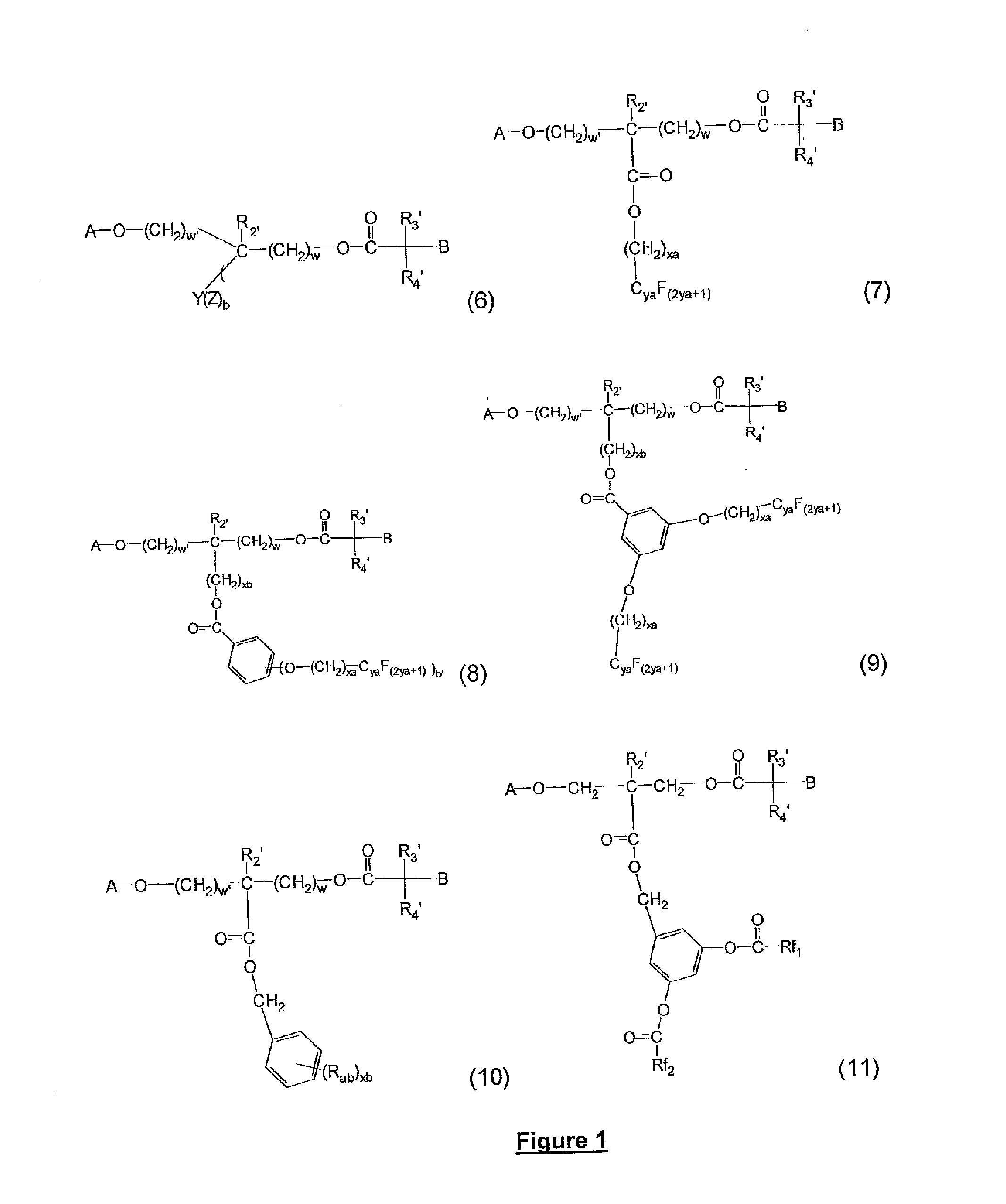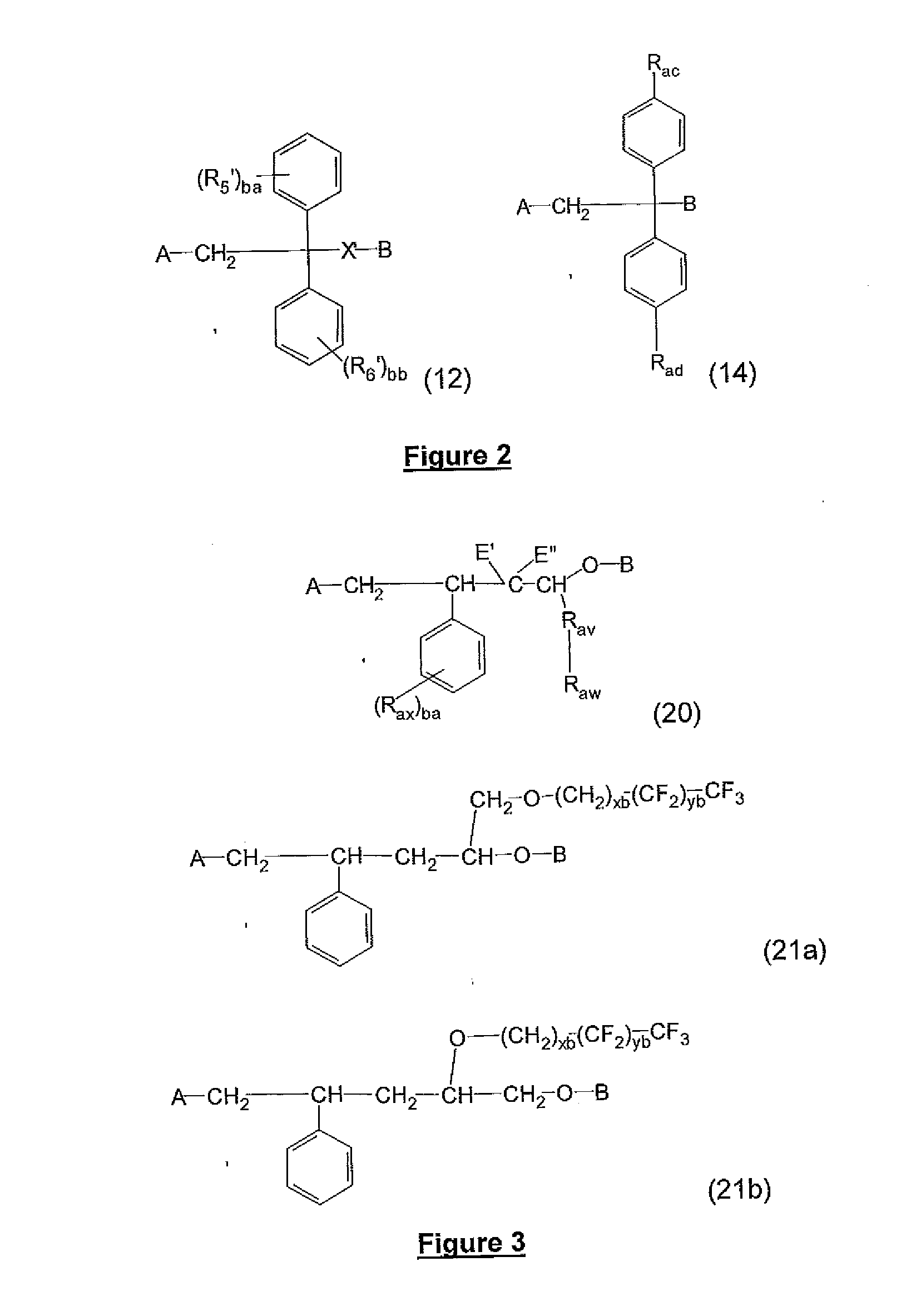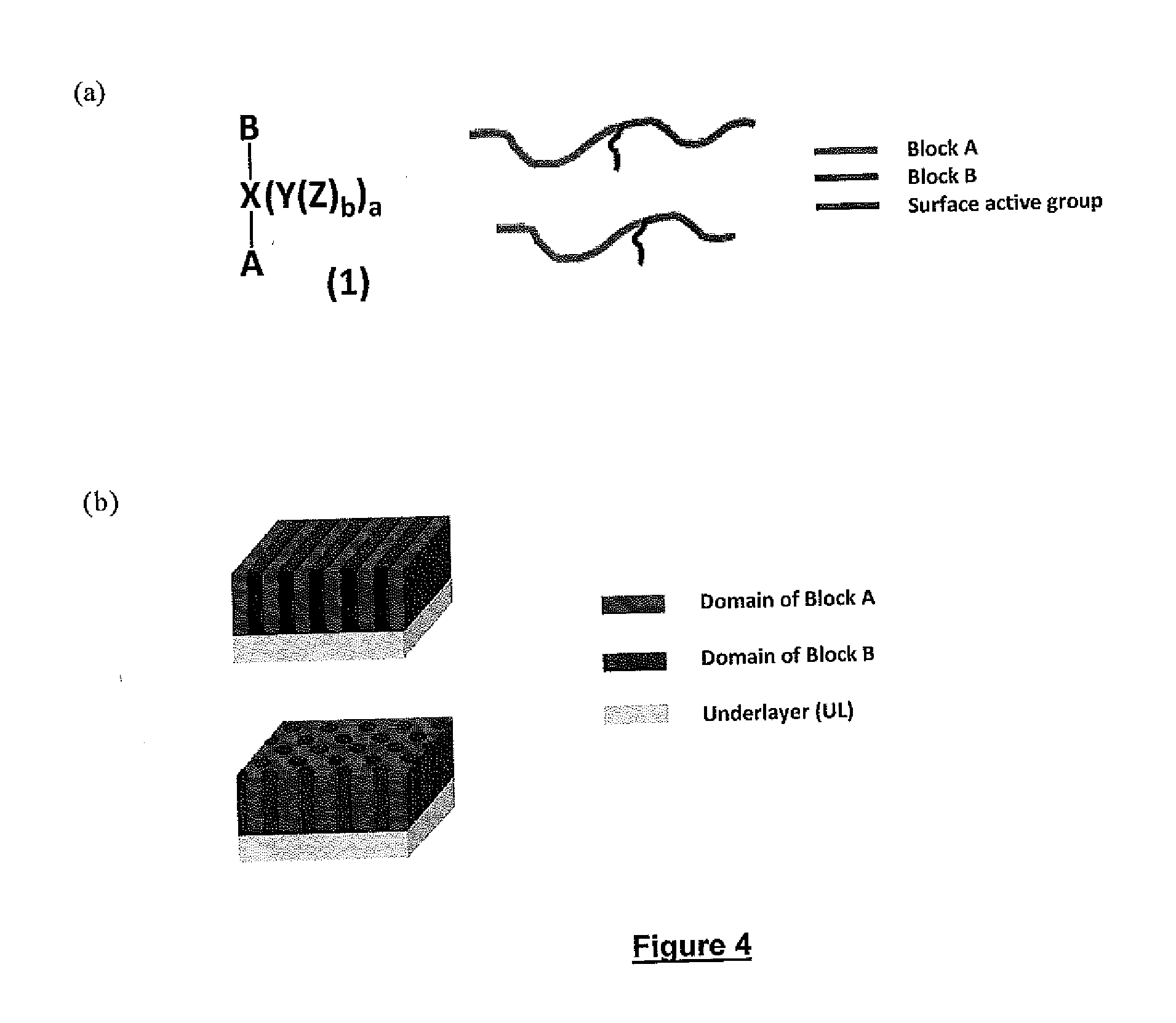Block copolymers with surface-active junction groups, compositions and processes thereof
a technology of surface-active junctions and copolymers, applied in the direction of instruments, photomechanical devices, coatings, etc., can solve the problems of difficult to achieve further reduction of pattern dimensions, limited dimensions of integrated circuit features, and less radiation-exposed regions with a developer solution or conventional ic plasma processing
- Summary
- Abstract
- Description
- Claims
- Application Information
AI Technical Summary
Benefits of technology
Problems solved by technology
Method used
Image
Examples
example 1
Synthesis of ATRP and ROP Initiator with Pendant Group C4OL
[0142]
[0143]To a 100 ml round bottom flask (RBF) equipped with a magnetic stir bar, 1.0 (5.74 mm) of AcBISMPA, 1.15 g (5.74 mm) of C4OL, 0.7 g (5.74 mm) of DMAP were added to 30 ml of dry DCM. The reaction was stirred under N2 for 10 min at room temperature after which point 1.18 g (5.74 mm) of DCC in 10 ml of DCM was added drop wise over 10 minutes. The reaction was stirred for 24 hours and was stopped the solution was filtered to remove the dicyclohexylurea. DCM was evaporated under vacuum and the resulting crude product was purified by passing through a silica gel column with Hexane: EtOAc 90:10 as the eluent to obtain the acetal-protected C4OL ester. The product was confirmed by 1H NMR and 19F NMR. 1H NMR (400 MHz, CDCl3 23° C., ppm): 1.21 (3H), 1.46 (6H), 3.71 (2H), 4.21 (2H), and 4.69 (2H). 19F NMR (400 MHz, CDCl3 23° C., ppm): −81.00, −120.48, −127.79.
[0144]In the next step, 1.5 g of the intermediate was added to 15 m...
example 2
Synthesis of ATRP and ROP Initiator with Pendant Group C8OL
[0146]The same reaction conditions used for Example 1 were employed, expect C8OL was used instead of C4OL. In the first step, the product acetal protected C8OL ester was confirmed by 1H NMR. 1H NMR (400 MHz, CDCl3 23° C., ppm): 1.21 (3H), 1.46 (6H), 3.71 (2H), 4.21 (2H), and 4.69 (2H). In the next step the product was confirmed by 1H NMR. 1H NMR (400 MHz, CDCl3 23° C., δ): 1.08 (3H), 2.54 (2H), 3.77 (2H), 3.94 (2H), and 4.51 (2H). In the final step the ATRP and ROP initiator with pendant C8OL group was confirmed by 1H NMR and 19F NMR. 1H NMR (400 MHz, CDCl3, 23° C., ppm): 1.28 (3H), 1.94 (6H), 2.36 (1H), 2.53 (2H), 3.77 (2H), 4.33 (1H), and 4.45-4.50 (3H).
example 3
Synthesis of ATRP and ROP Initiator with Pendant Group C9OL
[0147]The same reaction conditions used for Example 1 were employed, expect C9OL was used instead of C4OL in the same molar amount. In the first step, the acetal-protected C9OL ester was confirmed by 1H NMR. 1H NMR (400 MHz, CDCl3 23° C., ppm): 1.21 (3H), 1.46 (6H), 3.69 (2H), 4.20 (2H), and 4.71 (2H). In the next step the diol was confirmed by 1H NMR. 1H NMR (400 MHz, CDCl3 23° C., 8): 1.14 (3H), 3.81 (2H), 3.97 (2H), and 4.71 (2H). In the final step to obtain the ATRP and ROP initiator with pendant C9OL chain, the by product was confirmed by 1H NMR and 19F NMR. 1H NMR (400 MHz, CDCl3 23° C., ppm): 1.32 (3H), 1.94 (6H), 2.24 (1H), 3.80 (2H), 4.37-4.46 (2H), 4.69 (2H). 19F NMR (400 MHz, CDCl3 23° C., ppm): −199.41, −121.93, −122.72, −123.21, and −126.11.
PUM
| Property | Measurement | Unit |
|---|---|---|
| Surface energy | aaaaa | aaaaa |
| Composition | aaaaa | aaaaa |
| Structure | aaaaa | aaaaa |
Abstract
Description
Claims
Application Information
 Login to View More
Login to View More - R&D
- Intellectual Property
- Life Sciences
- Materials
- Tech Scout
- Unparalleled Data Quality
- Higher Quality Content
- 60% Fewer Hallucinations
Browse by: Latest US Patents, China's latest patents, Technical Efficacy Thesaurus, Application Domain, Technology Topic, Popular Technical Reports.
© 2025 PatSnap. All rights reserved.Legal|Privacy policy|Modern Slavery Act Transparency Statement|Sitemap|About US| Contact US: help@patsnap.com



